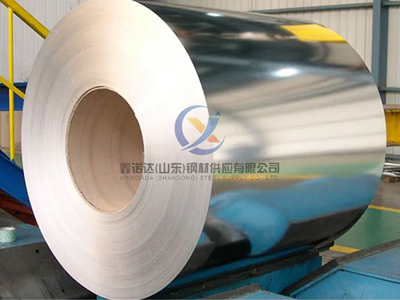Benefits of All-Stainless Steel Coils
While it’s true that stainless steel has excellent corrosion resistance properties, when used in a heat exchanger it can have poor heat transfer characteristics.
Oftentimes, using stainless steel components seems like a simple solution to corrosion on coils. You may see fins or tubes or other parts of the system show signs of corrosion, and it seems that the best option is to change the coil to stainless steel, solving the corrosion problem permanently. While this seems like a simple solution to a significant problem in the HVAC, industrial, and commercial systems where coils are found, the answer to the question “should I make an Woven Mesh Stainless Steel?” is far more complex.
While it’s true that stainless steel has excellent corrosion resistance properties, when used in a heat exchanger it can have poor heat transfer characteristics. So, it's possible that by solving the corrosion problem using stainless, other system issues could result. Performance reduction, exceeding fan or motor capacities, and exceeding space or structural limitations of the existing unit are all possibilities when changing a system’s materials to stainless. Finally, there are the economics – is the stainless steel solution a viable commercial option for the installation?
As the system engineer, you are faced with a dilemma: meet the overall system constraints, solve the corrosion problem, and maintain a budget so the project moves forward.

Stainless Steel Coil
To better understand the potential impact of using an all stainless steel heat exchanger, let’s evaluate an example 400,000 BTU/HR (33 tons or 119 kW) cooling coil. For the example, we’ll use 45° F water and a 36” x 45” coil with standard copper tubes and aluminum fins. The coil for this installation will be 12” deep, weigh 320 pounds and have a cost factor of 1.0. This is our base unit and is the component currently installed in the system.
The question is what is the impact of changing the heat exchanger to all stainless steel? There are two ways to evaluate the case: keep the same unit capacity or fit the space of the current unit.
Here are the results of using all stainless steel:
Maintaining capacity: Air pressure drop = increased 2.3x; Weight increase= 6x; Depth increase= 2.2x ; Cost Factor = 6.8x.
Air pressure drop = no change; weight increase 1.5x; Capacity Decrease = 40%; Cost Factor = 4.
To summarize, changing the coil from the copper and aluminum to all stainless steel will be a cost increase between 4 and 7 times the original coil. Moreover, it will either not fit in the existing unit, or short the system capacity by 40%.
If the system being designed is new, the larger size or different capacity could be reconciled with adjustments to other system components, such as changing the fan to accommodate the higher levels of air friction or altering the unit design to create more space for the larger coil. However, for an existing system, this may not be possible.
Stainless steel or other high corrosion-resistant material may be the only option in some systems: high temperatures, abrasive environments, extreme caustic chemical solution. For many cases, a basic coil with a high-quality coil coating can solve most coil corrosion issues. Let’s evaluate the impact of this option.
Based on Super Radiator research, using a coil coating has little impact to the thermal performance of the coil. However, coating does incur additional cost compared to an uncoated coil. Electro-deposition (E-coat) and baked phenolic (such as Heresite P413) are the most common, quality coil coatings. The example coil, with the coating will have cost factor of 1.3. The price is higher than the bare coil, but coating is a great option to solve the corrosion issue, meet the performance needs of the system, and fit the space.
Copper fin and tube are often considered for corrosive, abrasive, or harsh environments. For select installations, an all-copper construction is a good option. Adding to our example from earlier in the document, a copper coil will have a cost factor of 1.5. However, the copper construction does have the benefit of 3.5% increased capacity. Using copper fins keeps the air friction the same as with aluminum fins. The coil weight does increase by 1.8x.
For more information, welcome to contact us today or request a quote.